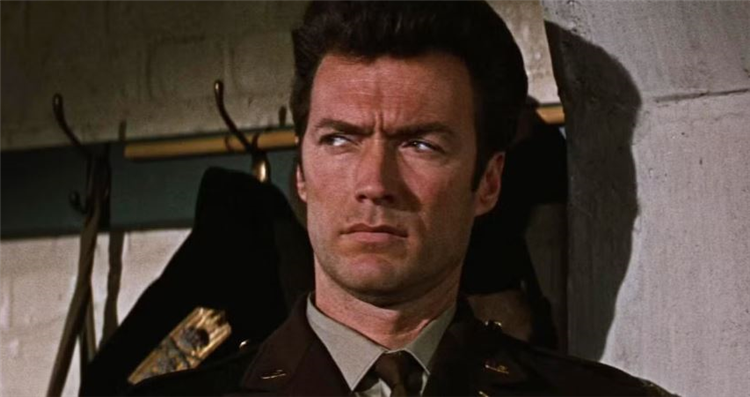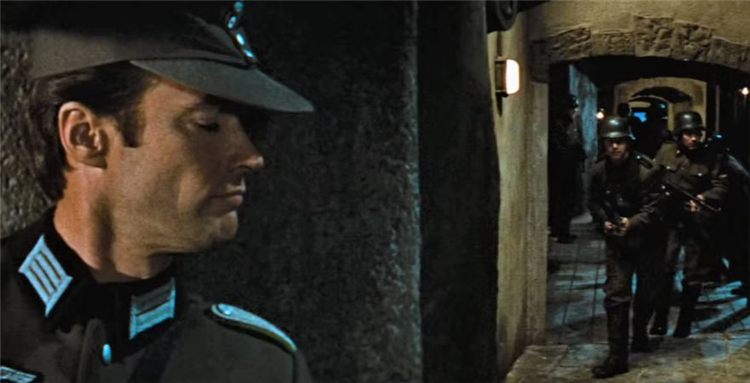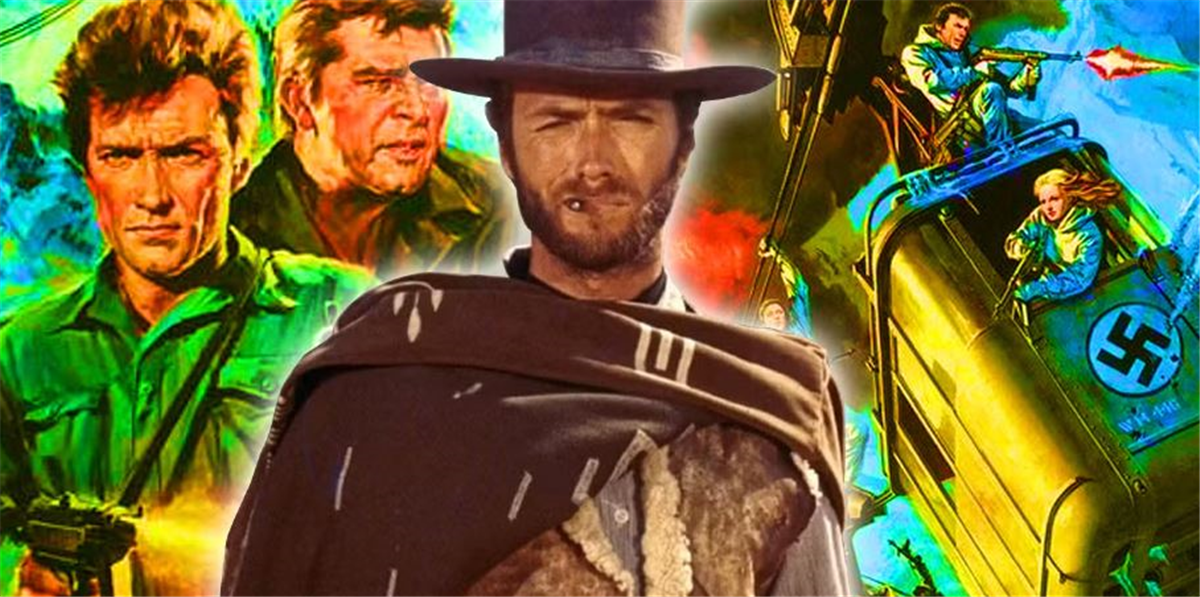To most audiences, Clint Eastwood is the movie cowboy. Eastwood is so synonymous with the Western, especially its deconstructive Spaghetti Western phase, that it’s impossible for some to see him as anything but a cold gunslinger. While he’ll always be The Man With No Name, Eastwood was such a once-in-a-lifetime movie star that he also left an irreplaceable mark on the wider action genre’s most famous niches. Cases in point: Dirty Harry for cop movies, and Where Eagles Dare for World War II movies. Not only is Where Eagles Dare one of Eastwood’s best military-themed movies, but it’s also one of the best World War II movies ever made.
That said, one of the biggest misconceptions about Where Eagles Dare is that it’s a typical Eastwood movie. Although he’s one of the movie’s biggest names and one of its most important characters, it was anything but a solo vehicle in the vein of his other movies. Truth be told, Where Eagles Dare is really Richard Burton’s movie, with Eastwood taking second billing. Furthermore, it was more than just another gritty action movie where a stony Eastwood gunned down hordes of enemies. These aren’t bad things, as these aspects helped the movie stand out even in Eastwood’s illustrious repertoire and age better with time.
Where Eagles Dare is Clint Eastwood’s Definitive World War II Blockbuster
The Movie Basically Put the Man With No Name in World War II

What makes Where Eagles Dare so interesting in the context of Eastwood’s career is that it was one of the very few times that he didn’t take the lead role. It was also one of the few movies that defied his typecasting at the height of his fame. The movie was released in 1968, just four years after his breakout performance as Joe in A Fistful of Dollars. More importantly, Where Eagles Dares hit cinemas just two years after The Good, the Bad and the Ugly cemented Eastwood as the face of the revisionist Spaghetti Western movement and the cowboy archetype. From the late ’60s to the ’90s, Eastwood was a certified movie star who was typecast as a cowboy. Even movies that weren’t set in the Wild West still played to his image as an Old West gunslinger, such as Coogan’s Bluff and Honkytonk Man.
Meanwhile, Where Eagles Dare cast him as Lt. Morris Schaffer: an American soldier sent alongside British operatives deep into Nazi Germany itself to infiltrate a Nazi stronghold. While it wasn’t his first World War II movie, Where Eagles Dare was the first one that gave Eastwood the spotlight — even if he was playing second fiddle to another actor. Burton (who portrayed the British spy Major John Smith) was the protagonist, with Eastwood’s Schaffer serving as his second-in-command. While Burton drove the story forward, got the most characterization, and delivered the movie’s biggest twists, Schaffer took care of the action scenes and fights. Although Schaffer was just as efficient at violence and as quietly reserved as Eastwood’s most famous characters, he was notably not in charge.
Schaffer was such a secondary character that he only fought and killed when ordered to by Smith, the mission’s commanding officer. In contrast, Eastwood’s characters were usually the first to shoot, regardless of his superior’s orders. “Dirty” Harry Callahan is the most obvious example. Schaffer was also knocked out during Where Eagles Dare’s now-iconic cable car fight. It was Smith who fought the Nazi spies in the movie’s climactic and most famous setpiece, and Schaffer woke up when Smith had already won. More importantly, Schaffer had no control of the situation and story in the way that Eastwood did as Private Kelly in Kelly’s Heroes, or Gunnery Sergent Thomas Highway in Heartbreak Ridge. Schaffer was clueless and deliberately kept out of the loop for most of the movie, and he was only filled in by the second act. As jarring and out-of-character as Schaffer may sound and look when put beside Eastwood’s leading roles, the opposite is actually true.
Schaffer is essentially what would happen if The Man With No Name — specifically Manco from For a Few Dollars More — were dropped into World War II. Both Schaffer and Manco were the deuteragonists of their respective movies. Despite being portrayed by a movie star, they were guests in their co-stars’ stories. Schaffer helped Smith rescue the captured “general,” while Manco aided Colonel Douglas Mortimer’s revenge. Their characterizations, backstories and dialogue were limited to the bare minimum, but these were more than enough to get audiences invested in their actions and fates. Most importantly, Schaffer and Manco represented Eastwood’s most underrated character archetype. When he wasn’t the protagonist, Eastwood portrayed imposing and implacable side characters. At times, these characters were actually who their movies’ titles referred to. Schaffer and Manco were just the early versions of the likes of The Stranger in High Plains Drifter or The Preacher in Pale Rider.
Where Eagles Dare Is a Pivotal World War II Movie & a War Epic Like No Other
The Movie Irrevocably Changed World War II Fiction and War Movies

Besides starring a young Eastwood and the sheer epic scale of its filmmaking, what makes Where Eagles Dare so important was that it was arguably the turning point for war movies. The movie was made and released during the late ’60s; the height of the Vietnam War. Societal anger, vitriol towards those in power and pessimism among Americans really took hold during this period. Surprisingly, war movies — which were incredibly optimistic and nationalistic just a decade prior — captured this fury perfectly. This act of artistic rebellion was made more poignant and significant by the fact that these movies were set during World War II: the war that fueled America’s image of military might and heroism the most.
Where Eagles Dare joined the likes of The Guns of Navarone and The Dirty Dozen in openly questioning and outright rejecting America’s moral high ground through their fictional World War II missions. In these movies, the soldiers were flawed anti-heroes, the high command was either corrupt or incompetent, and violence was brutal and blunt. No one was a clear hero or villain, and there was no heroism to be found in battle. In light of the horrors and evils of the Vietnam War, these movies demystified the way war was glorified and romanticized in American fiction. They also paved the way for more pessimistic World War II movies like A Bridge Too Far and Cross of Iron. Eastwood himself returned to this movement in Kelly’s Heroes , which recontextualized this anger in the form of comedy and a “private enterprise operation.”
What set Where Eagles Dare apart from its contemporaries was just how cynical it was. If The Guns of Navarone showed war’s grim realities and The Dirty Dozen starred the most unlikable rabble imaginable, Where Eagles Dare depicted the Allied Forces (metaphorically, the American government) to be just as bad or even worse than the Nazis. The movie’s true villains weren’t Nazis; they were German spies disguised as British soldiers and a high-ranking British officer who betrayed his country for personal gain. It was up to Smith, Schaffer and their dwindling group — which included prominent and proactive female characters, an archetype that was almost non-existent at the time — to expose these traitors. To add insult to injury, the movie just ended after Smith and Schaffer accomplished their mission. They didn’t save the day, conquer the enemy or stop the war. They just weeded out some of the many traitors who hid among the leaders they were told to trust.
At the time, this kind of twist was unheard of, especially in World War II movies where the moral lines were often so clear. Ever since Where Eagles Dare and its ilk subverted their subgenre’s idealism and unquestioned patriotism, World War II movies were never the same. Mindless and escapist World War II movies were (and are) still made, but those that followed Where Eagles Dare’s dark themes and deconstructions gradually became the dominant force. Even after the Vietnam War, its influence could still be felt in later World War II movies, and the genre at large. The days of John Wayne heroically leading cleancut American soldiers to righteous victory were long gone. The era of Eastwood’s wartime defiance of authority and capacity for unflinching violence, meanwhile, continues to thrive even to this day.
Where Eagles Dare is now available to watch and own physically and digitally.
